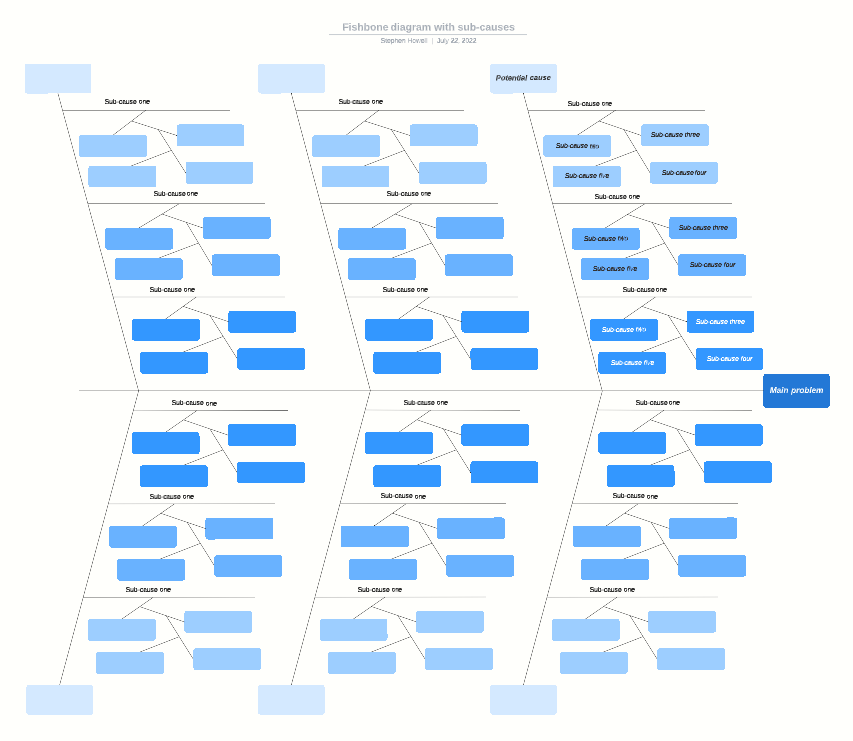Is your sales team’s follow-up above or below expectations?
Why is their follow-up above or below expectations?
What action should you take?
Understanding the Problem
Prospects go without follow-up or the follow-up is ineffective. It is not uncommon when sales teams are overwhelmed with high volumes of leads that some leads – in some cases a lot of leads – are forgotten, passed over, or neglected. It is called Shiny Object Syndrome (“SOS”) when sales teams focus all their attention on the new leads coming in while abandoning older leads and leads that are slow to respond. This means that as leads age older ones are passed over for the fresher new leads. This leaves the older leads to simply wither away. Sales teams focus on new leads at the expense of older leads simply because the older ones have yet to buy.
As we know all leads are not created equal. Some leads will naturally be better leads than others. They are further in the buying cycle when raising their hand and expressing interest. And it can make sense to move onto new leads over those that are older than a certain age. Having looked at the effectiveness of many sales motions it is not uncommon to find that leads convert in the first few steps when they are freshest. Stale leads that have been worked and reworked are exactly that. They are cold and will need to be rewarmed.
It is also not uncommon that leads become exhausted from outreach. Leads receive too many messages too often that are not relevant. There is often little or no intelligent personalization to the messages. The messages are not situationally relevant to solving the prospects problem. This results in brand exhaustion and lead fatigue. So, it should be expected that prospects tune out.
Acknowledging the problem is the first step. Once you determine that the problem is follow-up, you can focus your attention on determining why the problem is occurring. After which you can decide what to do about the problem. Sounds simply and it is, sort of.
Getting to Why
Classic reasons why prospects go without follow-up or the follow-up is ineffective include:
- The sales team does not want to appear to pushy
- The sales team is terrified of rejection
- The sales team has simply forgotten to follow-up
- The sales team thinks that prospects will follow-up with them instead
- The sales team has never been taught proper follow-up techniques
- The sales team does not have the skill or the will
- The sales team does not have a defined sales process
- The sales team does not have the systems that put guard rails in place
- The sales team does not have the time
- The sales team does not have enough head count to keep up with the volume
Understanding what areas the sales team is challenged may determine the solutions you consider.
People, Process, Systems, and Data
This is my go-to framework for exploring many business situations including problems like follow-up by sales teams.
Most problems in sales can be characterized by one of four categories: a People problem, a Process problem, a Systems problem, or a Data problem. Bear in mind that any problem in sales can overlap more than one category and sometimes it can fall into all four.
As you would expect, the four categories are highly interconnected. People follow Processes and interact with Systems which results in Data being created, updated, or deleted. Processes and workflows are encoded in Systems that rely upon Data-drive rules based on Data enter by People. Systems are operated by People following a Process based on the Data. And so forth and so on in every imaginable combination that you can think of.
The diagram below illustrates the interactions between the four categories; everything is connected in some way to everything else. It is all intertwined.

To understand why sales is challenged with follow-up start with the end results and work backwards to determine where the team falters.
There are several different approaches to understanding why the sales team’s follow-up is non-existent or ineffective. Visualization is one way to get to the root causes. You can use cause-and-effect diagrams like the one illustrated below. Diagrams of this type are known as Ishikawa diagrams or fishbone diagrams. It is one of my favorites.

You can also use problem-solving flowcharts if you are a linear thinker (like I am) or a mind map if you are a non-linear thinker (which I am usually not). And you can use workflow diagrams to flowchart and visualize bottlenecks that might be the cause.
No matter which visualization approach you choose to use, working together with the sales team you are likely to identify any common challenges and unique situations where lead follow-up has become non-existent or ineffective.
Using Data to Understand Why Leads are Go Without Follow-up
Tony Robbins puts it best: Success leaves clues. In order to get the results you want, start by understanding what good looks like and work backwards from there.
To do this, select a group of leads that had proper follow-up. These leads typically have been dispositioned and are no longer in an open status. They will have been qualified, rejected (not a fit, bad data, etc.), or returned to nurture (for future follow-up). The key to this group is that they had the proper and expected followed-up. Bucket the number of logged activities by type and quantity. In other words, count calls, connects, emails, and replies.
Now select a group of leads that did not have proper follow-up. This group would be those leads that have been neglective, passed over, and forgotten. They are the ones you determined to have had ineffective follow-up. These are typically leads that have yet to be dispositioned, i.e., they are still sitting in an open status. Bucket the number of logged activities by type and quantity. Count the calls, connects, emails, and replies.
Profile leads based on their firmographics. Use profiling to group leads by industry, size, revenue, geography and bucket them by followed-up and not followed up. Profile the leads themselves using your Ideal Customer Profile (“ICP”). Bucket leads that were followed up and those that were not based on title, role, decision maker and the like.
Upon examination, are there patterns that pop out? Look for relationships between groups of leads, the type and nature of activity conducted, their firmographics and fit based on ICP. Look for positive or negative correlations.
This should help you determine what good looks like: leads that have had proper and effective follow-up. This should also help you determine what ineffective follow-up and lack of follow-up looks like. The fog should lift to reveal what is happening and why.
Depending on your findings, identifying the best solution to resolve the problem is the next step in the process.
Finding the Right Solution
Resolving why leads are not being followed-up or follow-up has been ineffective requires the right solution your company’s sales process and the sales team’s abilities. Using a cause-and-effect approach you can work though these (and more) questions:
- Do you have enough People for the volume of leads received?
- Are your People following a documented Sales Process?
- Do you Systems support the Sales Process documented?
- Are your People using the Systems consistently?
- Is the Data reflected correctly based on the Process?
- Are your People creating and updating the Data to reflect lead progression?
- Are you tracking measures and reporting on the right Data for awareness?
- Do you have Systems dashboard that flash warnings when tracked measures depart from the expected?
Once you have the determined what corrective actions are needed, implementation is the next step. This could involve coaching and training your People, changes or enforcement of business rules based on an updated or o new business Process, implementing new or updating older Systems, collecting new Data or data not previously required before.
To resolve any sales problem knowing where to start will help identify weaknesses in your sales strategy, sales management, sales process, and sales team. Once you know these things, you can implement changes intended to remediate the problems. Once implemented, then remeasure, review, and refine as needed to resolve your sales team’s lack of or ineffective follow-up.
About the Author
Stephen Howell is a multifaceted expert with a wealth of experience in technology, business management, and development. He is the innovative mind behind the cutting-edge AI powered Kognetiks Chatbot for WordPress plugin. Utilizing the robust capabilities of OpenAI’s API, this conversational chatbot can dramatically enhance your website’s user engagement. Visit Kognetiks Chatbot for WordPress to explore how to elevate your visitors’ experience, and stay connected with his latest advancements and offerings in the WordPress community.



Leave a Reply
You must be logged in to post a comment.